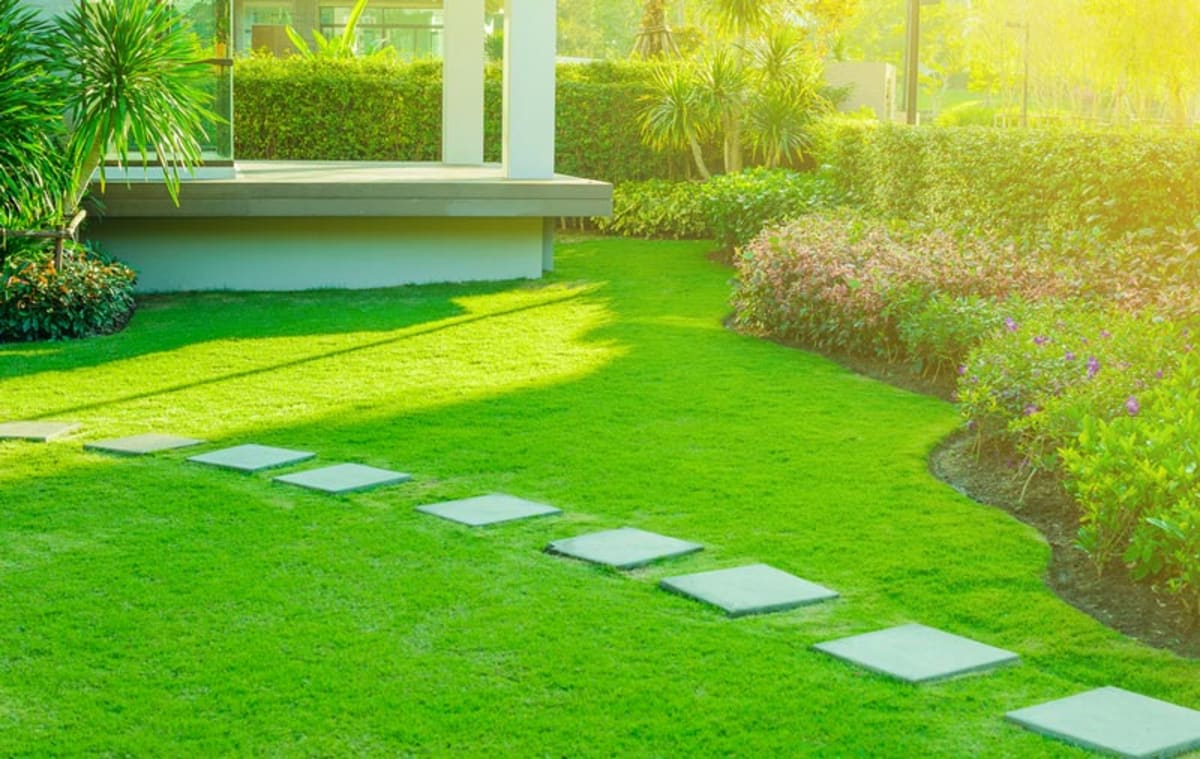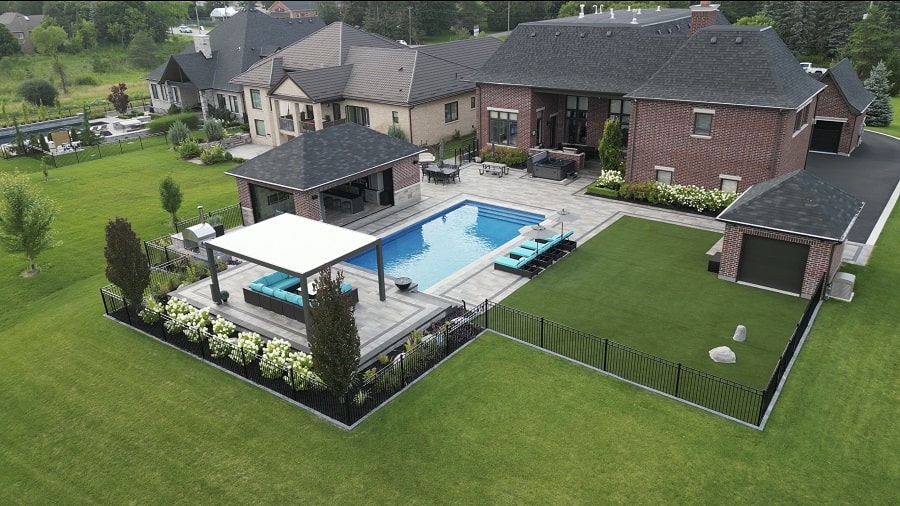Recognizing the Comprehensive Range of Functions in Professional Landscaping Services
The extensive range of expert landscaping services incorporates a variety of basic components. It consists of landscape layout concepts, plant option, and hardscaping features. Furthermore, it resolves irrigation systems and maintenance methods. Each element plays an essential function in creating useful and aesthetically pleasing exterior rooms. Recognizing exactly how these elements collaborate can disclose much regarding the art and scientific research of landscape design. The journey into this intricate area is simply starting.
Landscape Style Principles
Efficient landscape layout concepts are essential for developing harmonious outside spaces that boost both visual appeal and performance. These concepts direct the plan of elements within the landscape, making sure a cohesive aesthetic experience. Trick elements consist of balance, which distributes aesthetic weight evenly; proportion, which relates the size of numerous aspects per various other and the room; and unity, which produces a feeling of integrity via constant themes and products.
In addition, focus directs focus to prime focus, while rhythm develops movement with rep of layout attributes. The effective use line can produce paths and lead the eye through the landscape. On top of that, recognizing the site's topography, environment, and existing features is crucial for assimilation with the surrounding environment. By adhering to these foundational concepts, landscape developers can craft spaces that not just look attractive but also serve their desired function, boosting the general experience for users.
Plant Selection and Installation
In the domain name of professional landscape design, plant selection and installation play a vital duty in attaining a prospering yard - landscaping. Highlighting native plant benefits, seasonal factors to consider, and the certain dirt and sunshine requirements of each types guarantees a sustainable and cosmetically pleasing landscape. Mindful planning in these areas not only enhances biodiversity yet additionally promotes long-lasting environmental wellness
Indigenous Plant Advantages
Why should home owners take into consideration native plants for their landscaping projects? Indigenous plants use countless benefits that improve both visual appeals and environmental sustainability. They are well-adapted to neighborhood environments, needing much less water and upkeep contrasted to non-native varieties. This strength decreases the need for chemical plant foods and chemicals, promoting a healthier environment. Furthermore, native plants offer environment and food for local wildlife, consisting of pollinators, which can increase biodiversity in suburbs. Their experience with regional dirt and climate condition likewise leads to much better growth rates and durability. By picking native plants, home owners not only produce visually appealing landscapes yet additionally add to environmental preservation, making a favorable effect on their regional environment. Indigenous plants stand for a smart choice for landscape design jobs.
Seasonal Plant Considerations
Home owners who have actually accepted native plants in their landscaping can even more enhance their outdoor areas by considering seasonal plant choices. By integrating plants that thrive in specific periods, they can produce aesthetically attractive and dynamic landscapes throughout the year. Springtime might usher in vibrant blossoms like daffodils and tulips, while summertime can display lush vegetation and colorful perennials. Autumn presents a palette of warm tones with goldenrods and asters, while wintertime can be accentuated with evergreens and ornamental yards for texture. Specialist landscapers commonly recommend selecting plants that not just enhance existing indigenous species but additionally give year-round interest and support regional wildlife. This thoughtful approach to seasonal plant choice ensures a consistently developing and sustainable garden atmosphere.
Dirt and Sunshine Needs
Successful landscape design depends upon comprehending the details soil and sunshine demands of plants. Different types thrive under differing problems, needing a careful analysis of both elements throughout the selection procedure (landscaping). Dirt kinds, such as sandy, clay, or fertile, impact drain, vitamins and mineral accessibility, and origin development. Furthermore, pH degrees can influence plant health and wellness, demanding soil testing to determine viability. Sunshine demands differ significantly; some plants grow in complete sunlight, while others like complete or partial shade. An expert landscaper considers these components to ensure peak growth and visual charm. By lining up plant selections with the atmosphere's specific qualities, landscapes can achieve sustainability, durability, and aesthetic harmony, inevitably causing successful plant facility and long-lasting upkeep
Hardscaping Features and Construction
While landscape design commonly stimulates pictures of rich greenery and vivid flowers, hardscaping attributes play a vital duty in specifying outside areas. These components, that include patio areas, sidewalks, keeping wall surfaces, and attractive stonework, give structure and performance to gardens and yards. Hardscaping makes use of materials such as concrete, stone, timber, and brick, permitting for diverse styles that enhance the all-natural landscape.
The building and construction of hardscaping features needs mindful preparation and execution to assure durability and aesthetic appeal. Specialists analyze site conditions, drain, and spatial connections to develop natural outside environments. Appropriate setup strategies are essential, as they avoid issues like erosion and shifting in time.
Including hardscaping not only improves the visual passion of a property but likewise facilitates exterior tasks, making it an essential element of comprehensive landscape design services. Eventually, thoughtful hardscaping adds to both the capability and beauty of outdoor rooms.
Watering Equipments and Water Management
Efficient watering systems and water monitoring are essential elements of specialist landscape design, as they guarantee that plants get the necessary hydration for perfect growth. These systems can vary from simple drip irrigation arrangements to sophisticated computerized lawn sprinkler systems, designed to satisfy the particular demands of varied landscapes. Appropriate water management not just enhances water usage, reducing waste, yet additionally enhances plant health and wellness and lessens condition threats.
Landscape design professionals analyze various factors, consisting of soil type, plant types, and regional climate, to develop customized watering remedies. Additionally, including rainwater harvesting strategies can even more boost sustainability and performance (Read More). Routine upkeep of watering systems is essential to keep functionality and prevent leakages, which can lead to water loss and enhanced costs. Ultimately, a properly designed irrigation system plays a pivotal role in maintaining the visual charm of outside spaces while promoting eco-friendly stewardship within expert landscaping practices
Yard Treatment and Maintenance Approaches
Yard treatment and upkeep methods are basic for attaining a lavish, healthy and balanced yard that enhances the overall landscape. These techniques incorporate different practices targeted at advertising ideal development and aesthetic charm. Regular mowing is important, as it urges thick, also growth while preventing weeds from establishing. Additionally, correct fertilizing provides necessary nutrients, with applications tailored to the specific grass kind and dirt conditions.
Watering practices should concentrate on deep, irregular irrigation to encourage origin growth, while aeration improves dirt framework and promotes nutrient absorption. Bug and illness monitoring is additionally vital; identifying problems early enables reliable therapies that reduce damage.
Overseeding can revitalize slim or broken grass, boosting thickness and shade. By implementing these targeted lawn care approaches, landscaping professionals can assure that yards continue to be dynamic and healthy and balanced throughout the periods, considerably adding to the general appeal of the building
Seasonal Landscape Care and Maintenance
As the periods change, appropriate landscape treatment comes to be important for keeping the health and charm of exterior spaces. Each season provides one-of-a-kind challenges and demands. In springtime, landscape specialists focus on trimming, growing, and feeding to motivate development. Summer season demands normal watering, weed control, and pest administration to secure freshly established plants.
Autumn calls for the preparation of gardens for winter season, consisting of mulching, fallen leave elimination, and the planting of bulbs for the following springtime. In addition, winter months treatment involves securing prone plants from frost and guaranteeing that hardscapes are functional and safe.
Throughout the year, seasonal landscape upkeep warranties that outdoor areas continue to be aesthetically enticing and healthy. Expert services can supply customized maintenance plans that adapt to the certain requirements of each season, enabling homeowner to take pleasure in lively landscapes year-round. Generally, seasonal care is an important element of specialist landscaping that advertises long life and visual worth.
Sustainable Landscaping Practices
A growing number of building proprietors are welcoming lasting landscaping practices to create eco-friendly outside areas. These practices focus on conserving sources, improving biodiversity, and reducing ecological effect. Indigenous plants are often picked for their low tide requirements and compatibility with neighborhood ecosystems, minimizing the requirement for chemical fertilizers and chemicals. Rain yards and absorptive paving are used to manage stormwater drainage, advertising groundwater recharge and reducing erosion.
Lasting landscaping incorporates natural gardening strategies that prioritize soil health and advertise natural bug control. Reliable irrigation systems, such as drip irrigation and rain harvesting, help enhance water usage. Additionally, landscape designers increasingly promote for making use of recycled materials, such as recovered timber and rocks, to reduce waste. By adopting these sustainable practices, homeowner not just add to environmental preservation but likewise produce visually pleasing atmospheres that can love marginal upkeep.
Regularly Asked Concerns
Exactly how Lengthy Does a Landscaping Project Generally Take to Complete?
Typically, a landscape design task can take anywhere from a couple of days to several weeks to complete, relying on the task's style, size, and complexity needs. Read More. Aspects such as climate and resource schedule also affect timelines
What Factors Influence the Expense of Landscaping Services?
Various aspects affect landscape design service costs, including task dimension, design intricacy, worldly quality, labor expenditures, geographic place, and seasonal demand. Each element adds distinctively to the overall economic requirements of a landscape design job.
Are Landscaping Services Available Year-Round?
Landscaping services are usually readily available year-round, although schedule may differ based on region, seasonal weather, and certain service offerings. Some services may be restricted during severe climate or off-peak seasons.
Do Landscape Design Business Deal Warranties on Their Job?

Can I Layout My Landscape Without Specialist Aid?
Yes, people can create their landscapes without expert aid. Nevertheless, they may lack know-how in plant choice, design, and environmental considerations, potentially bring about much less efficient designs that can need expensive adjustments later.
